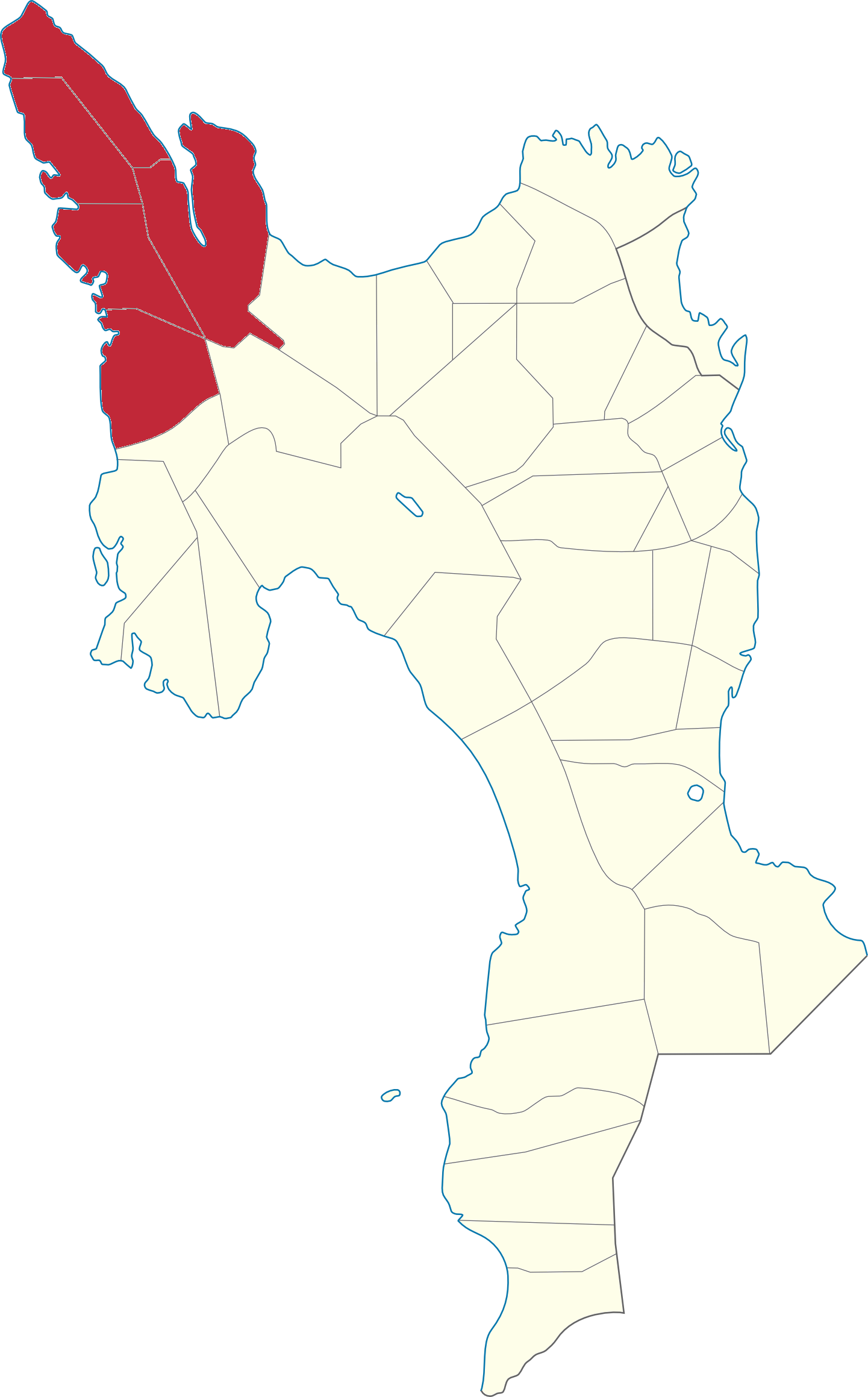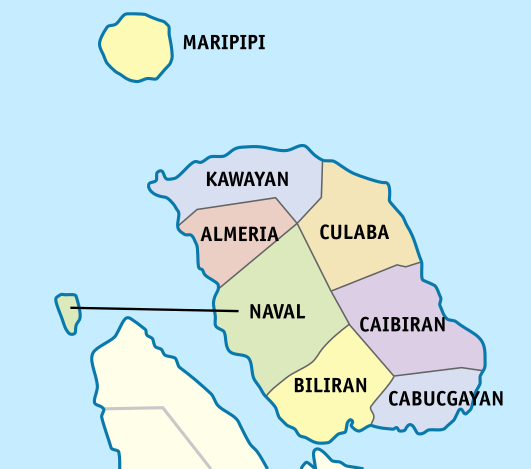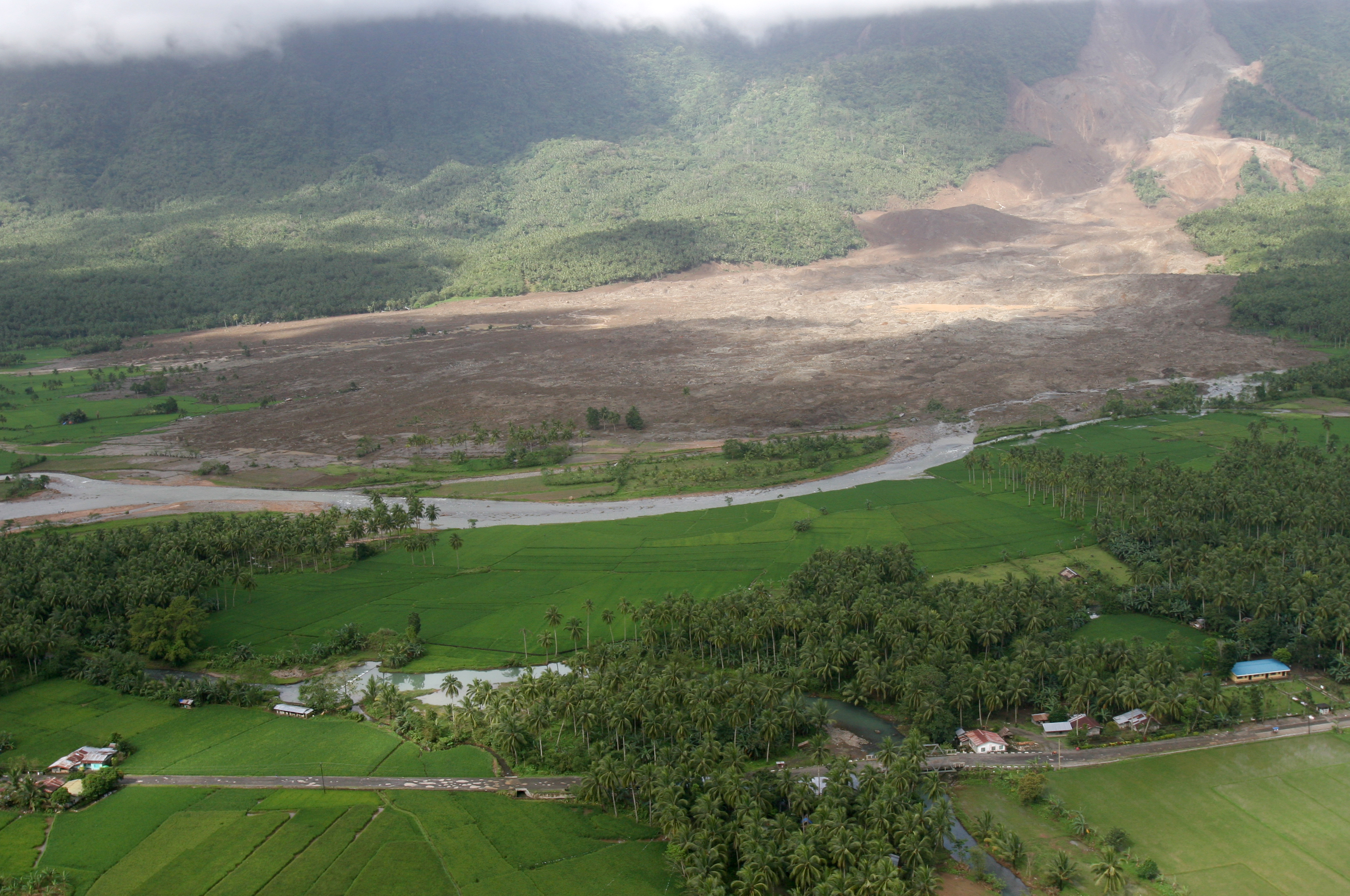|
Leyte's 3rd Congressional District
Leyte's 3rd congressional district is one of the five congressional districts of the Philippines in the province of Leyte (province), Leyte. It has been represented in the House of Representatives of the Philippines since 1916 and earlier in the Philippine Assembly from 1907 to 1916. The district consists of the old provincial capital, Leyte, Leyte, Leyte, and adjacent municipalities of Calubian, San Isidro, Leyte, San Isidro, Tabango and Villaba. It is currently represented in the 18th Congress of the Philippines, 18th Congress by Anna Victoria V. Tuazon of the National Unity Party (Philippines), National Unity Party (NUP). Until 1931, it consisted of the north-central municipalities of Abuyog, Barugo, Burauen, Capoocan, Carigara, Dagami, Hinunangan, Hinundayan, Jaro, Leyte, Jaro, La Paz, Leyte, La Paz, and Pastrana, Leyte, Pastrana. Following the creation of the Leyte's 5th congressional district, fifth district, it was redefined to consist of the southern municipalities of undi ... [...More Info...] [...Related Items...] OR: [Wikipedia] [Google] [Baidu] |
House Of Representatives Of The Philippines
The House of Representatives (; '','' thus commonly referred to as ''Kamara'') is the lower house of Congress of the Philippines, Congress, the bicameral legislature of the Philippines, with the Senate of the Philippines as the upper house. The lower house is commonly Totum pro parte, referred to as Congress, although the term collectively refers to both houses. Members of the House are officially styled as ''representatives'' () and are sometimes informally called ''congressmen'' or ''congresswomen'' (). They are elected to a three-year term and can be re-elected, but cannot serve more than three consecutive terms without an interruption of one term (e.g. serving one term in the Senate ''ad interim''). Around 80% of congressmen are district representatives, representing specific geographical areas. The 19th Congress has 253 Congressional districts of the Philippines, congressional districts. Party-list representatives, who make up not more than twenty percent of the total number ... [...More Info...] [...Related Items...] OR: [Wikipedia] [Google] [Baidu] |
Barugo
Barugo (IPA: ɐˈɾugo, officially the Municipality of Barugo (; ), is a municipality in the province of Leyte, Philippines. According to the 2020 census, it has a population of 34,497 people. Residents of the town of Barugo are traditionally referred to as ''Barugonon'' but often incorrectly referred to as ''Barugueños''. Barugo is a town in the northern coastal part of Leyte province facing Carigara Bay, north-west of Tacloban City, whose history dates back to the early days of Spanish colonization. Etymology In Barugo there is a legend which was being taught to elementary pupils during the 1950s and 1960s regarding how the town got its name. The legend goes like this: "Once upon a time there was a man named Cassadok. One day while he was resting by the river bank under the shade of a giant tree, a Spaniard came along and asked him the name of the place. Cassadok did not understand Spanish and thinking the Spaniard was asking the name of the big shady tree, answered "Balu ... [...More Info...] [...Related Items...] OR: [Wikipedia] [Google] [Baidu] |
Biliran
Biliran, officially the Province of Biliran (Waray language, Waray-Waray: ''Probinsya han Biliran''; ; ), is an island province in the Philippines located in the Eastern Visayas Regions of the Philippines, region (Region VIII). Biliran is one of the country's smallest and newest Provinces of the Philippines, provinces. Formerly a sub-province of Leyte (province), Leyte, it became an independent province in 1992. Biliran lies less than a kilometer north of the island of Leyte. A bridge-causeway fixed link over Poro Island in the gateway town of Biliran, Biliran, Biliran connects the province to Leyte. Its capital is the municipality of Naval, Biliran, Naval on the western coast of the island which is the most populous in the province. Biliran is sometimes called "The Singapore of Eastern Visayas" by locals, due to it having a causeway that is similar to that of Singapore's, and also because of its small size and its strategic position in the Visayas Archipelago wherein it is a ... [...More Info...] [...Related Items...] OR: [Wikipedia] [Google] [Baidu] |
Southern Leyte's At-large Congressional District
Southern Leyte's at-large congressional district refers to the lone congressional district of the Philippines in the province of Southern Leyte. It was represented in the House of Representatives of the Philippines 1961 until 2022. Southern Leyte first elected a single representative provincewide at-large representative for the 5th Congress of the Third Philippine Republic following its creation as a regular province separate from Leyte under Republic Act No. 2227 on May 22, 1959. Before 1959, its territory was represented as part of Leyte's at-large, 2nd and 3rd districts. Between 1978 and 1984, multi-seat regional delegations were formed in lieu of provinces for the Fourth Philippine Republic parliament known as the Interim Batasang Pambansa, with Southern Leyte forming part of the ten-seat Region VIII's at-large district. It was restored as a single-member district in 1984. On February 1, 2019, Republic Act No. 11198 was signed, reapportioning Southern Leyte into two legis ... [...More Info...] [...Related Items...] OR: [Wikipedia] [Google] [Baidu] |
Southern Leyte
Southern Leyte (; Kabalian: ''Habagatan nga Leyte''; ; ), officially the Province of Southern Leyte, is a province in the Philippines located in the Eastern Visayas region. Its capital and largest city is Maasin. Southern Leyte comprised the third congressional district Leyte until it was made into an independent province in 1959. Southern Leyte includes Limasawa, an island to the south where the first Roman Catholic Mass in Philippine soil is believed to have taken place and thus considered to be the birthplace of Roman Catholicism in the Philippines. The province ranks as the second least populated in the region, after the province of Biliran. According to the 2020 census, the province has a population of 429,573. Southern Leyte's geological features created several issues in the province after the flooding of the Subangdaku River and the 2006 mudslide in Guinsaugon. Organizations warned the province it was susceptible to natural occurrences like landslides and floods ... [...More Info...] [...Related Items...] OR: [Wikipedia] [Google] [Baidu] |
Leyte's 5th Congressional District
Leyte's 5th congressional district is one of the five congressional districts of the Philippines in the province of Leyte (province), Leyte. It has been represented in the House of Representatives of the Philippines since 1931. The district consists of the city of Baybay and adjacent municipalities of Abuyog, Bato, Leyte, Bato, Hilongos, Hindang, Inopacan, Javier, Leyte, Javier, Mahaplag and Matalom, since its second restoration in 1987. It is currently represented in the 19th Congress of the Philippines, 19th Congress by Carl Cari of the Lakas–CMD. Prior to its second dissolution in 1961 due to the creation of Southern Leyte, the district consisted of the central municipalities of Alangalang, Barugo, Burauen, Capoocan, Carigara, Dagami, Jaro, Leyte, Jaro, Julita, Leyte, Julita, La Paz, Leyte, La Paz, Pastrana, Leyte, Pastrana, Tabontabon, and Tunga, Leyte, Tunga. All these municipalities were subsequently redistricted to the Leyte's 2nd congressional district, 2nd district. Re ... [...More Info...] [...Related Items...] OR: [Wikipedia] [Google] [Baidu] |
Pastrana, Leyte
Pastrana (IPA: ɐs'trana, officially the Municipality of Pastrana (; ), is a municipality in the province of Leyte, Philippines. According to the 2020 census, it has a population of 19,359 people. History Prior to incorporation as a separate municipality, Pastrana was part of the municipality of Dagami. Before the coming of the Spaniards, the settlement was called "Pamagpagan" because of the way the native inhabitants left their hair in disarray. In 1891, Captain Wenceslao Nielo, with the aid of a Spanish Franciscan friar by the name of Fr. Eusebio Ibanez, organized the settlement into a town and was transferred from Guinbaya-an to its present site. Father Ibanez blessed it with a holy mass. As a token of gratitude, the inhabitants called the town "Pastrana" in honor of Fr. Ibanez who was a native of Pastrana, Spain. Shortly afterwards, parochial schools were established. At this time, the unit of local administration was the pueblo which embraced a number of barrios. The f ... [...More Info...] [...Related Items...] OR: [Wikipedia] [Google] [Baidu] |
La Paz, Leyte
La Paz (IPA: ɐ 'pas, officially the Municipality of La Paz (; ), is a municipality in the province of Leyte, Philippines. According to the 2020 census, it has a population of 19,174 people. History In the 1870s, a sitio was formed, and a chapel was built there before 1886. The chapel was called ''"rosaryohan."'' Spanish missionaries visited this place to teach the natives the doctrine. However, the people had to go to Dulag for the Holy Week and days of obligation in order to attend mass. Until then, the sitio was named ''Cabadyangan''. When the question of official name came up, the people unanimously selected the name "La Paz", in honor of their patroness, Nuestra Señora De La Paz y Buen Viaje (Our Lady of Peace and Good Voyage). The first ''hermano mayor'' was Victoriano Relano in 1908 when the first celebration of the fiesta in honor of the ''"Nuestra Señora de la Paz y Buen Viaje"'' was held. In 1903, La Paz was made a barrio of Burauen. Capitan Estefanio de Paz was ... [...More Info...] [...Related Items...] OR: [Wikipedia] [Google] [Baidu] |
Jaro, Leyte
Jaro (IPA: haɾo, officially the Municipality of Jaro (; ), is a First Income Class municipality in the province of Leyte, Philippines. According to the 2020 census, it has a population of 43,758 people. History In the early time of the Spanish regime, the section where the Jaro is situated today was a lush forest enjoying its primitive freedom undisturbed by human beings. In those days, struggles between Christianity and Mohammedanism took place. Datu Buisan and Sirungan led one of the Moro expeditions. They came to the Visayas leading a fleet of colorful moro vintas razing Christian towns to the ground, killing the inhabitants and taking some as slaves. Christians had to unite against the invaders and this was how Jaro came into being. There were two Leyteños known far and wide for their skill with the native arms and bravery in wars. These two men were Bonsilao of Ormoc and Sinirungan of Dagami. These two men were so strong that the people concluded that they possessed sup ... [...More Info...] [...Related Items...] OR: [Wikipedia] [Google] [Baidu] |
Hinundayan
Hinundayan, officially the Municipality of Hinundayan ( Kabalian: ''Lungsod san Hinundayan''; ; ), is a municipality in the province of Southern Leyte, Philippines. According to the Hinundayan has a total land area of 6,108 hectares or 61.08 square kilometers, comprising 17 barangays. 2020 census, it has a population of 12,398 people. Etymology During the 17th century, there were Spanish sailors who arrived in Sabang. At that time, the fisherfolks and villagers were busy setting up ''handayanans'' or resting place for their outrigger canoes. These handayanans were made up of posts with horizontal rails which were a meter high from the ground where the canoes and other sea crafts were laid after use. When the Spanish sailors asked the villagers what was the name of the place, the villagers who were oblivious of the strange language thought that they were asked of what they were doing, so they simply answered in their own dialect, ''"handayanan among gibuhat para sa among baruto." ... [...More Info...] [...Related Items...] OR: [Wikipedia] [Google] [Baidu] |
Hinunangan
Hinunangan, officially the Municipality of Hinunangan ( Kabalian: ''Lungsod san Hinunangan''; ; ), is a municipality in the province of Southern Leyte, Philippines. According to the 2020 census, it has a population of 29,149 people. Hinunangan is known as the "Rice Granary of the Province" for its vast plain land that is entirely planted with rice. Hinunangan has great potential for tourism because of its beautiful sandy beaches and islands. The town is also a producer of rattan and wood-based furniture, abaca handicraft items, pineapple, vegetables, other forest products, and bamboo furniture. It has a potential for mineral water and root crop processing and copper mining. Hinunangan is also known as a major gateway in Leyte because of its near proximity to Tacloban City. The opening of Abuyog– Silago Road cuts travel time from Tacloban by half from the previous 6 hours to less than 3 hours. It is also the place in Southern Leyte with the most immigrants from Europe and North ... [...More Info...] [...Related Items...] OR: [Wikipedia] [Google] [Baidu] |
Dagami
Dagami (IPA: ɐ'gami, officially the Municipality of Dagami (; ), is a municipality in the province of Leyte, Philippines. According to the 2020 census, it has a population of 36,178 people. Waray-Waray is the language spoken by the residents called ''Dagamin-on''. It is classified as a third class municipality and mere dependent on agriculture such as coconut, rice and corn farming. The employment rate is 63% of the total population workforce in the municipality. Its total land area of 161.5 square kilometers, equivalent to 16,165 hectares. More than half of its plains on the eastern side is cultivated for rice and corn farming while the western side is planted with coconut trees. Coconut production is a major source of income.''Tubâ'' and copra - the white raw material from the coconut where coconut oil is extracted. The town of Dagami is famous for its local delicacies called '' binagól'' (a distinct dessert made from sweetened large mashed taro called ''talian'' packed ... [...More Info...] [...Related Items...] OR: [Wikipedia] [Google] [Baidu] |






